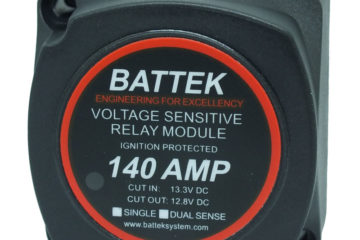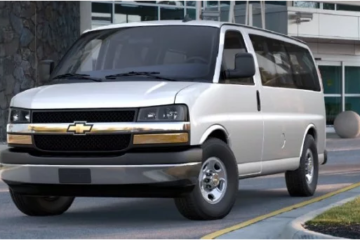Voltage Sensitive Relay is regarded as the natural upgraded version of Split Charge Relay.
The main difference between Voltage Sensitive Relay and Split Charge Relay is the operation – it is totally automatic. Voltage Sensitive Relay does not require an ignition feed to operate, it works by monitoring the Starter Battery Voltage (usually the starter battery or battery bank with other charging source such as a battery charger or wind gen), when this voltage exceeds 13.3V the processor makes the assumption that the alternator / battery charger or other power device is active and as such it will automatically engage the relay to connect the main battery bank to the auxiliary battery bank and so charge the auxiliary battery. Conversely, when the voltage drops below 12.8V the processor in the relay assumes that either the engine has been stopped or the load on the aux battery is pulling the starter battery down too much and for safety reasons it should be isolated.
In a nut shell this is easier to install than Split Charge Relay and is smarter, however, it has some of the same limitations as the standard automotive relay we used so often. Ideal applications: See signal relay applications. Also ideal for charging a secondary battery bank from a battery charger which has only one output such as combined inverter charger. Voltage Sensitive Relay is ignition protected. Thing to consider in installation: Make sure the relay can comfortably handle that sort of current continuously. It would be wise to give the relay a good 10-20% comfort zone, i.e. always up-size the relay if the charging source and relay are the same, for example, if you have an 80A alternator, combi or battery charger with an 80A relay then go to the 140A relay option to be safe. Next its cost of installation and ease of installation. If you are fitting the unit and access to ignition feeds is simple then the Ignition Feed system should be entertained, however, if not then the Voltage Sensitive Relay version is much simpler to fit and totally automatic, and has a lot more functions.
The last, but most important aspect is safety. The most important thing here is to establish what the maximum possible load is that could be placed on the secondary battery bank when the relay is engaged, i.e. a large inverter / anchor winch, bow thruster. Remember that every load you put on, the secondary battery will have a percentage of this load transferred to the primary battery depending on how full the secondary battery is. This could range from a few percent to 100 percent, so, it is important that the relay system can deal with this high load without damage. If there are large potential loads such as hundreds of amps then the only way to do this is using a Current Limiting Voltage Sensitive Relay because when exposed to excessive currents, the current limiting models simply and safely shut down until the excessive current is removed, i.e. switched off, then it can automatically re-instate itself and carry on after that large surge load has stopped. This removes the need for excessive cabling and ensures a safe installation with less reliance on fuses for protection.



2 Comments
Jimmie Weyers · 5th January 2019 at 8:59 pm
In your post it states that the Led light strips with tape on can still be used once Cut. I cut 1 inch off and tryed to find wires in it. Could nit find any at all as how could I use this long led strip or is it no good?
car mechanic simulator 2018 key generator · 16th June 2019 at 11:52 pm
Lovely website! I am loving it!! Will come back again. I am taking your feeds also.
Comments are closed.